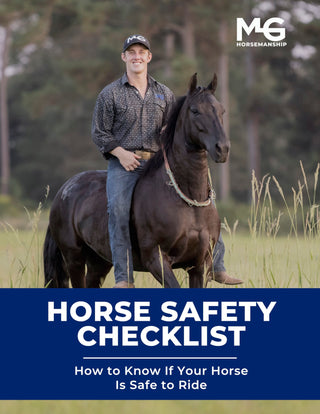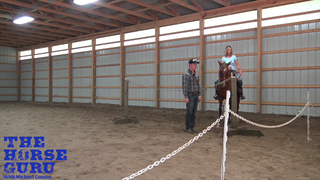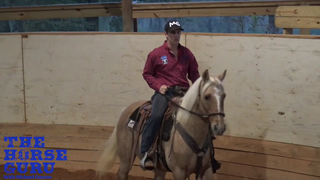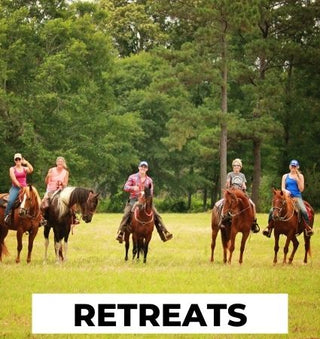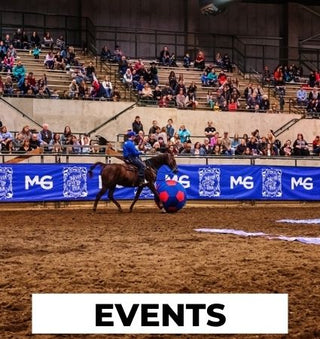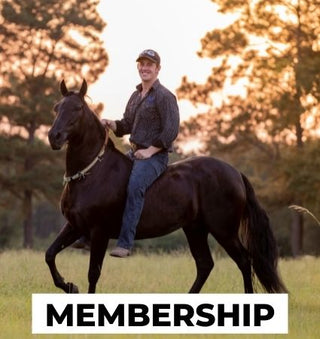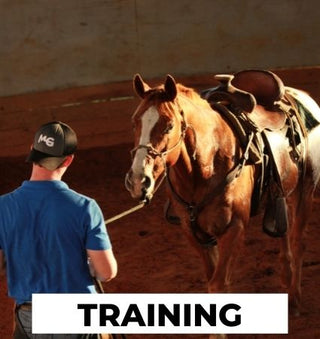Watch the Video Here or continue reading below
When it comes to training a horse for speed control, understanding the key principles can make all the difference. In this guide, we’ll explore effective techniques to manage a horse’s pace, ensuring a safe, enjoyable ride for both you and your equine companion. Drawing on the example of Rocky, a 9-year-old Tennessee Walking Horse, we’ll break down strategies that can be applied to any horse, regardless of breed or temperament.
Understanding the Importance of Head Control
Why Head Position Matters
A relaxed horse carries its head low. When a horse’s head is high, adrenaline increases, and it becomes harder to control their movements. By gaining control of the head, you can calm the horse and guide it more effectively.
Techniques to Control the Head
-
Spirals and Flexion: Use spirals to establish initial control over the horse’s head. Flexing the horse in motion helps to teach responsiveness and softness.
-
Releasing Adrenaline: Dropping the horse’s head below its shoulders releases endorphins, calming the horse and reducing its adrenaline levels.
Addressing Common Walking Issues
Hot Horses and High Energy Levels
Many riders struggle with horses that walk too fast or resist walking altogether. The solution lies in clear communication and consistent training.
-
Don’t Pull Back: Pulling on the reins creates resistance, escalating the horse’s energy. Instead, apply gentle, consistent pressure to encourage the horse to drop its head.
-
Stop and Reset: If the horse gets excited, stop it immediately. Hold until the horse stands still, then release pressure when it relaxes.
Creating Crystal-Clear Communication
Clarity is key. Ensure your horse understands that standing still and walking calmly are the only acceptable behaviors. Avoid giving mixed signals, as these can confuse and frustrate the horse.
Pro Tips for Controlling Speed on the Trail
Pro Tip #1: Use Pressure and Release
If the horse gets excited:
-
Stop immediately.
-
Apply pressure until the horse drops its head.
-
Release the pressure as soon as the horse relaxes. This cycle teaches the horse that calm behavior leads to comfort.
Pro Tip #2: No Excuses
No matter the situation—whether other horses are nearby, the barn is in sight, or there are distractions—maintain consistency. Do not allow the horse to break the walking pattern, as this reinforces bad habits.
Pro Tip #3: Establish Respect for the Stop
If a horse respects the stop, it will be easier to control its pace:
-
Stop the horse and drop the reins.
-
If the horse moves, bring it back to the stopping point.
-
Wait for one of three signs of relaxation:
-
A big exhale.
-
Dropping the head.
-
Kicking out a hip. Once the horse shows relaxation, encourage it to take one step and release your legs.
-
The Long-Term Benefits of Speed Control
Initial training might take time, but consistency pays off. By making the first ride clear and structured, subsequent rides become easier. Over time, the horse will learn to walk calmly and confidently, making trail rides more enjoyable for everyone.
Final Thoughts
Training a horse for speed control is about patience, clarity, and consistency. By focusing on head control and clear communication, you can transform a high-energy horse into a calm and reliable trail partner. Remember, the key is to make it simple for the horse to understand what you want and reward them for calm, controlled behavior.
Thank you for reading! If you’re facing challenges or have specific training questions, leave a comment below. We’re here to help you bond with your horse and achieve your training goals.
Get 30-day horse training for FREE—join the Horse Help Challenge now HERE!



